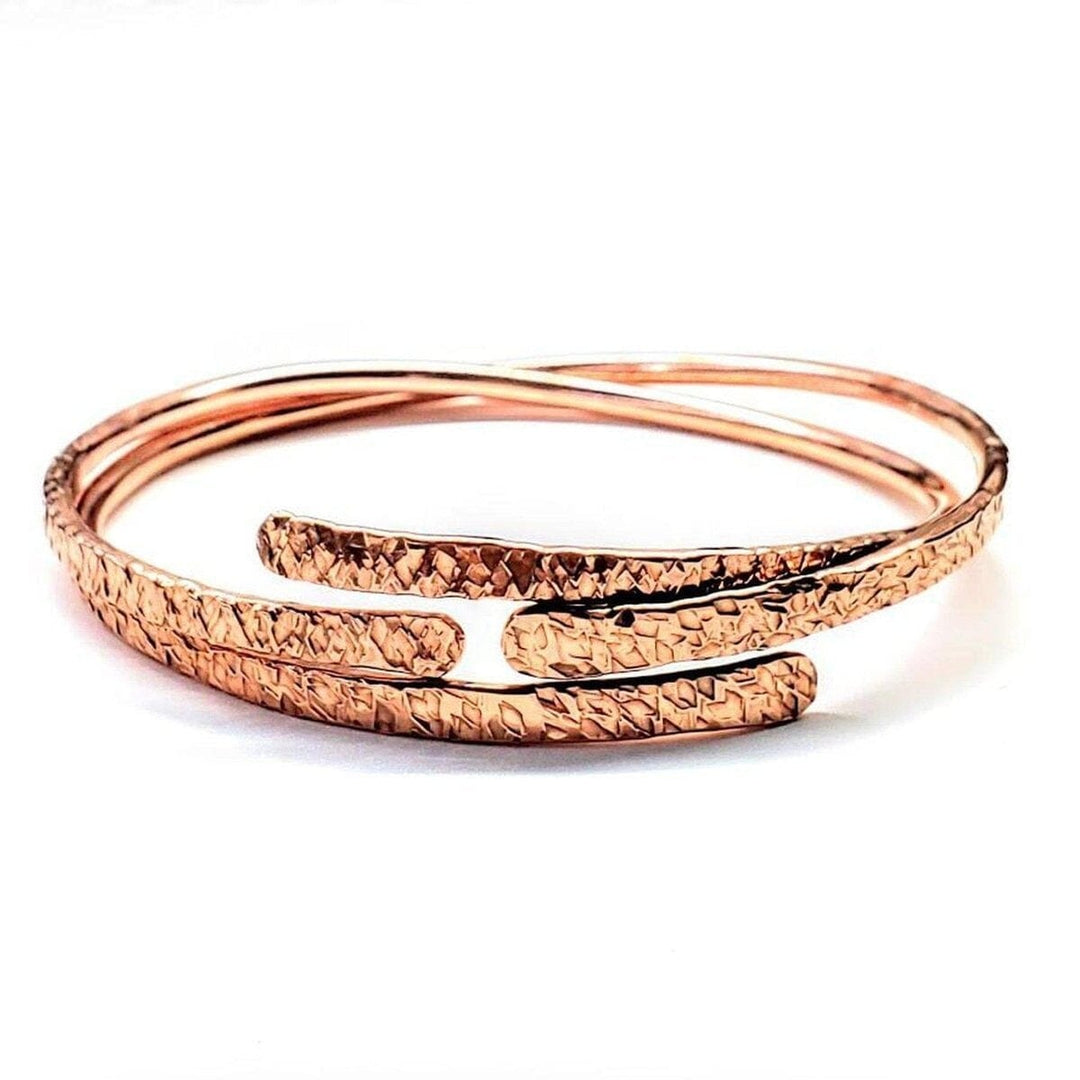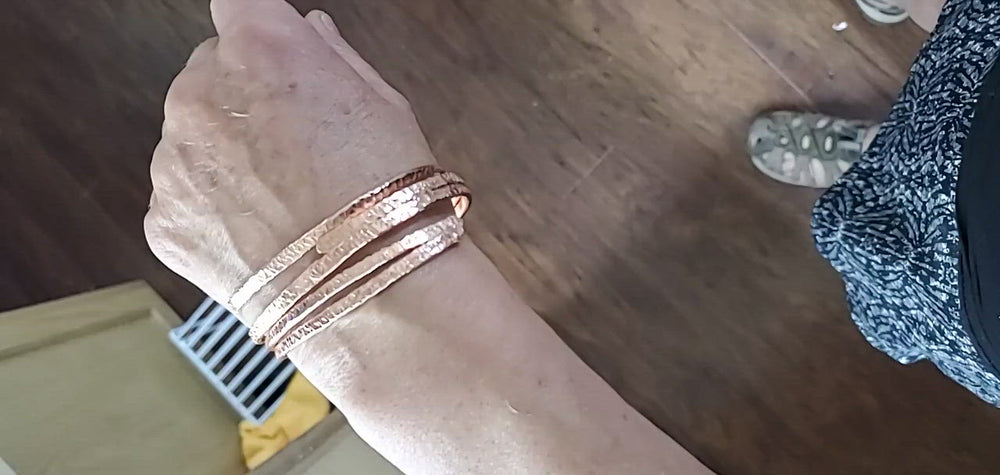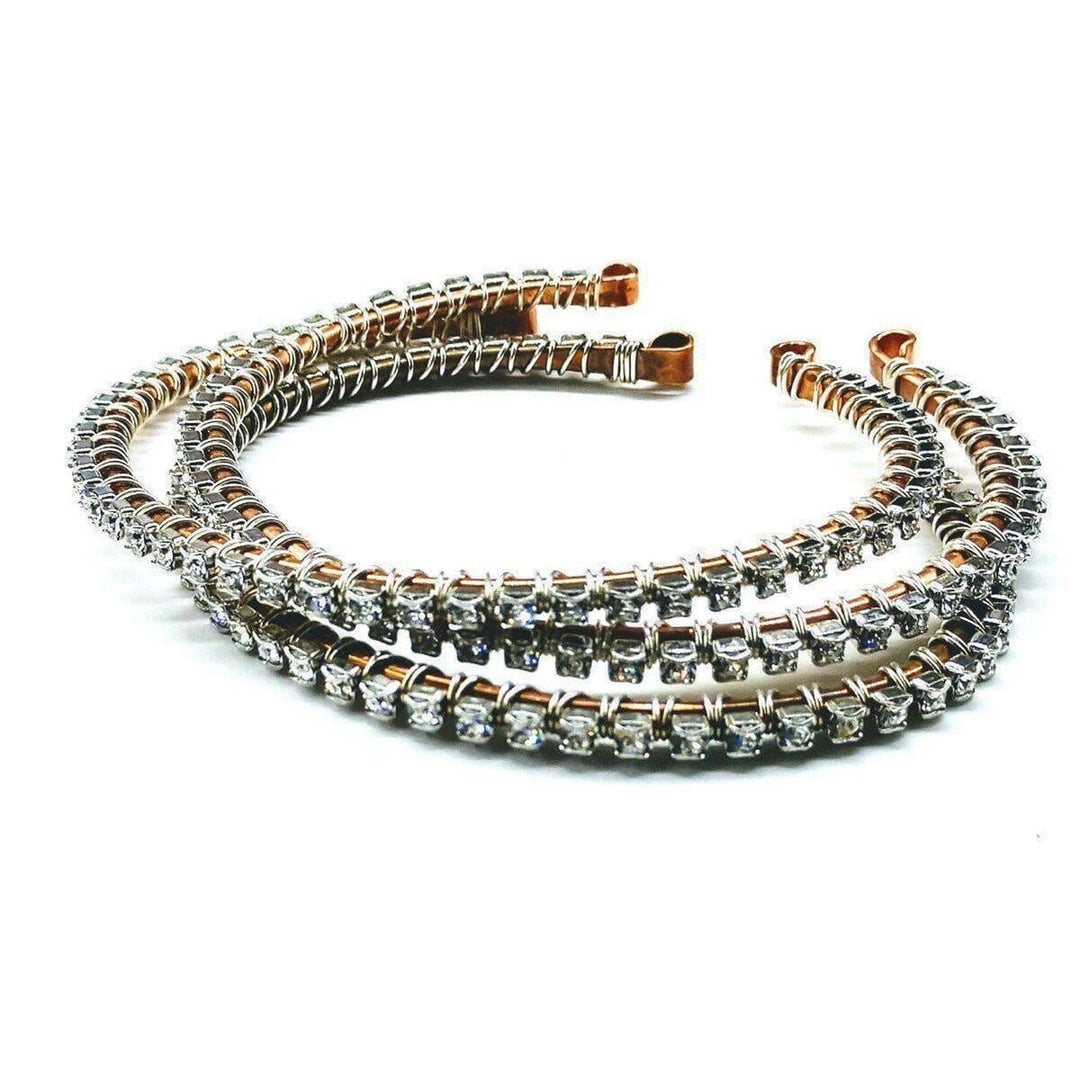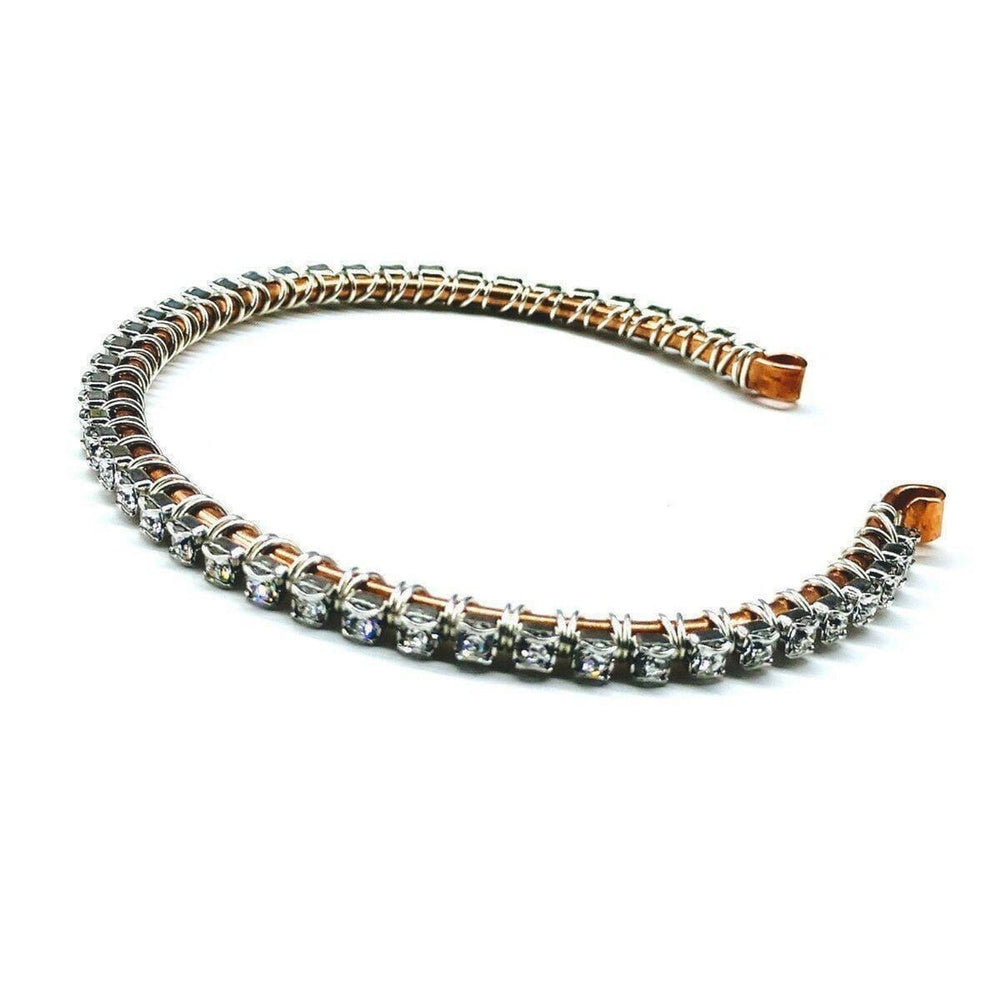Hammered Copper Jewelry: Crafting Beauty and Heritage
In the world of contemporary jewelry, hammered copper designs stand out with their unique blend of rustic charm and elegant craftsmanship. This enduring metal, revered for both its aesthetic and metaphysical properties, has captivated artisans and consumers alike. As we explore hammered copper jewelry, we'll delve into its origins, crafting techniques, and the energies it is believed to harness. This article reveals the enchanting narrative of hammered copper jewelry and its multifaceted connections to history and modern fashion.
Table of Contents
- Introduction to Hammered Copper Jewelry
- Benefits of Hammered Copper Jewelry
- Design and Manufacturing Process
- Metaphysical Properties of Copper
- Competitive Analysis and Market Insights
- Conclusion
Introduction to Hammered Copper Jewelry
Over centuries, hammered copper has been cherished for its earthy allure and versatile applications, from ancient armor to modern jewelry. This unique art form involves texturing copper through pounding, creating distinct patterns that gleam with every move of light. But what makes hammered copper jewelry a favored choice for artisans and jewelry enthusiasts? In this article, we explore its benefits, manufacturing processes, and the spiritual energies it encompasses. By following a well-structured semantic framework, we bring to light the rich tapestry of hammered copper jewelry and what sets it apart in today's jewelry market.
Benefits of Hammered Copper Jewelry
The allure of hammered copper jewelry lies not only in its lustrous beauty but also in its myriad benefits. John S Brana, an expert in copper jewelry, highlights the warmth exuded by its orangey-brown hues, often associated with natural elegance. Copper's antioxidizing properties give it the advantage of becoming more appealing over time, developing a patina that carries the history of its wear.
Copper also boasts hypoallergenic attributes, making it a suitable choice for those with sensitive skin. Jessica Adams from Christ Centered Ironworks emphasizes the ease of finding copper jewelry that suits personal styles, given the metal's adaptability to various textures and forms. With its affordability compared to precious metals like gold and silver, copper offers both aesthetic beauty and functional advantages.
Design and Manufacturing Process
The journey from raw copper to a piece of stunning jewelry is an art that marries creativity and technical skill.I offer insights into how hammered copper is crafted. The process starts with copper wires or sheets that are hammered to enhance durability while creating texture. Using flat-headed hammers and anvils, craftsmen shape the metal meticulously, infusing each piece with individuality.
This manual process means no two pieces are identical. Copper's malleability allows for the creation of various shapes, from pendants to bangles, emphasizing style and structural integrity. The craftsmanship involved is not just about aesthetics—it's about creating items that hold both financial and sentimental value.
The creation of hammered copper jewelry involves a blend of artistry, meticulous craftsmanship, and technical skill. This step-by-step journey showcases how artisans transform raw copper materials into exquisite works of wearable art. Below, each phase is broken down and elaborated with bullet points and a numbered list for a comprehensive understanding of the process:
Step 1: Selection of Raw Materials
Material Choice:
Copper, known for its malleability, durability, and rich aesthetic qualities, is the foundation of the jewelry.
- Artisans use copper sheets or wires as the starting material.
- The selection of thickness and size is critical to ensure both design flexibility and durability.
Step 2: Alloy Preparation (if required)
To enhance durability or achieve a specific finish, artisans may mix copper with other metals (e.g., tin or silver) to create customizable alloys like bronze or sterling copper blends.
Step 3: Hammering Process (Texturing and Strengthening)
This phase incorporates the hallmark technique that defines hammered copper jewelry.
-
Setting Up Tools:
-
Essential tools include flat-headed hammers, ball peen hammers, and specialized anvils or metal blocks.
-
Protective gear, such as gloves or aprons, ensures artisan safety during the process.
-
Shaping and Texturing:
-
Purpose of Hammering:
-
Creates texture by applying unique patterns of dents and grooves to the copper’s surface.
-
Increases the structural integrity of the material by compacting the surface through repeated strikes.
-
Technique:
-
The copper is hammered in strokes, either rhythmically or randomly, depending on the desired texture.
-
Time and pressure are adjusted to avoid over-fatiguing the metal while achieving the perfect balance between style and sturdiness.
-
Individuality:
-
The manual hammering process ensures each piece is one-of-a-kind, as even small variations in striking patterns create unique textures.
Step 4: Forming and Shaping
-
Crafting the Jewelry Shape:
Copper’s malleability is exploited to shape the material into diverse designs, such as: -
Pendants (e.g., intricate patterns, natural elements like leaves or feathers).
-
Bangles and bracelets, are often designed with flowing curves or geometric symmetry.
-
Earrings, shaped into hoops, drops, or custom artistic forms.
Alexa Martha at alexamarthadesigns.com who is a featured artisan was featured for the art of wire sculpting which is another cool way to manipulate copper wire or any metal wire, but especially copper wire because of its softness. She often uses that technique together with other ways to create her handmade jewelry.
Step 5: Joining and Assembly (if required)
In complex designs involving multiple components:
-
Pieces are carefully joined using soldering techniques.
-
Precision tools, such as jeweler's magnifiers and small clamps, help in achieving seamless connections.
Step 6: Finishing Touches
Once the preliminary shaping and crafting are complete, the jewelry is polished or treated for its final aesthetic appeal:
-
Surface Treatments:
-
Polishing: Buffing the surface enhances the metal’s shine and brings out its natural luster.
-
Antiquing: Applying chemical patinas can create earthy, rustic tones or aged effects.
-
Sealing: A clear protective coating may be applied to prevent tarnish while preserving the patina and texture.
-
Edge Refinement:
-
Artisans smooth out sharp edges for comfort and safety.
-
Edges are often sanded and rounded to enhance wearability.
-
Stamping/Engraving (Optional):
-
Personalized engravings such as initials, symbols, or custom messages can be added for sentimental value.
Step 7: Quality Control
Before the jewelry reaches customers, artisans thoroughly inspect each piece:
-
Check for structural integrity and durability.
-
Ensure uniform finishes and alignment, where appropriate (e.g., clasp closures).
-
Verify that any soldered joints are seamless and strong.
Step 8: Packaging and Presentation
-
The jewelry is often accompanied by an artistic form of packaging, complementing the handmade essence of the item.
-
Care instructions are included to help the wearer maintain the beauty of the piece over time.
By following these detailed steps, artisans preserve the tradition of handcrafted copper jewelry while offering a piece of art that connects customers to the story, skill, and passion behind each creation.
Metaphysical Properties of Copper
Beyond its visual appeal, hammered copper holds a special place in metaphysical beliefs. Copper is thought to be a conductor of spiritual energy, promoting balance and harmony. Neva Murtha shares how wearing copper jewelry can stimulate energy flow, enhancing intuitive and psychic abilities. These beliefs date back to ancient cultures, where copper was used for healing and protection.
Wearing copper jewelry is said to have grounding effects, drawing negative energies from the body and replacing them with revitalizing vibrations. Such properties contribute significantly to the copper's popularity among those seeking both decorative and holistic benefits from their jewelry
Conclusion
The hammered copper jewelry that Alexa Martha designs and makes is more than just stylish; it bridges ancient artisanship and modern expression, practicality, and purpose. As she embraces the beauty of copper, she also appreciates its narrative—a dance of form and function, aesthetic and metaphysical artistry. Whether you wear Alexa Martha Designs copper jewelry for its holistic properties, hammered copper jewelry invites us into a world where history and modernity shine in every handmade piece.
By harnessing research, expert insights, and consumer trends, this article has traversed the intricate world of hammered copper jewelry, celebrating its timeless charm. We hope it inspires both appreciation and understanding of this remarkable tradition—where every piece tells a story, and every wear reinforces a connection to an age-old craft.
Finally, for those interested in exploring the tactile nature of copper jewelry, consider purchasing from reputable artisans highlighted, such as the copper puzzle piece button Viking knit bracelet.
















Leave a comment